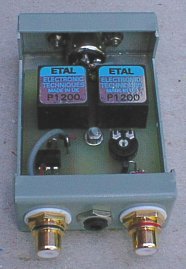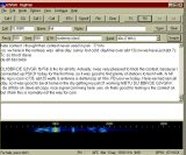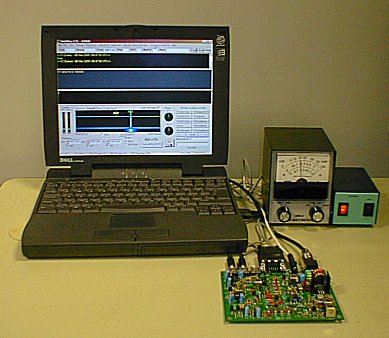
Some of the commercial interfaces are quite expensive, considering how few components are contained inside their pretty boxes. I'm currently using a homemade "Prodata" interface from the design by Bob Lewis, AA4PB, in March 2002 QST. This is much better (and cheaper!) than many of the commercial interfaces and is designed for use with Icom transceivers. One of the best commercial interfaces is the excellent MixW RigExpert. The Signalink USB is also a popular interface and like the Rigexpert has a built-in soundcard IC, resulting in less cables in the shack. My old PC PC was a 700Mhz Pentium III with 512Mb running Windows 2000 Professional and a Soundblaster PCI64 card. The performance was more than adequate for PSK31.

This is an example of a PSK31 QSO using Digipan. The bottom window shows the "waterfall" tuning aid. The diamond is centered on the received signal from DL1BBR. Tuning of received PSK31 signals is accomplished by a mouse click on any one of the multiple displayed signals. Although the PSK31 system has no error checking and correction, the narrow bandwidth imparts a good signal to noise ratio, resulting in a quite robust system.
